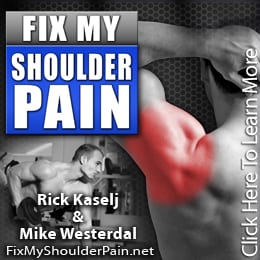Shoulder Pain Symptoms
Shoulder pain can range from mild to severe or even excruciating pain. It is usually not a fun experience and in many cases can require immediate treatment. Shoulder pain treatment can occur in different forms depending on the type of shoulder injury that a person has. Treatment for such pain could involve various therapies including physical therapy and electrical stimulations. People suffering from shoulder pain can also use medication, the application of heat and cold or rehabilitation programs and routines that involve stretching and exercise to treat the pain. However, before diagnosis and treatment of shoulder pain begins, shoulder pain symptoms occur and are usually the first sign that something is not quite as it should be.
What are shoulder pain symptoms? How can a person recognize that the symptoms which he or she is experiencing are related to shoulder pain? The shoulder is a somewhat complicated area consisting of more than one joint. The shoulder joints are the acromioclavicular joint, the sternoclavicular joint and the glenohumeral joint. Pain can occur within the shoulder area due trauma or injury to any part of these joints including associated structures that surround the shoulder joints. These structures include cartilages, tendons, ligaments and muscles that surround the bones at the joint and enable the shoulder function appropriately. All the components of the shoulder help it function as a very mobile area within the body. However, this mobility or lack thereof can also help distinguish shoulder pain symptoms from other types of symptoms that a person may be experiencing.
Due to the fact that the shoulder joints allow a wide range of motion, the risk of injury in this region is increased. The location of the pain is probably a good giveaway regarding shoulder pain. Pain that stems from injury to the shoulder joint bones or structures within the shoulder usually becomes localized within the shoulder area. Hence, if the collar bone that makes up one of the shoulder joints becomes fractured, the affected individual will experience pain in the shoulder area. Also, degeneration of cartilage due to arthritis or other medical conditions can affect surrounding shoulder structures and can cause localized pain within the shoulder area. Thus, an early symptom involves identification of discomfort around the shoulder region and being able to confirm that this discomfort is not a one-time occurrence.
However, it is also important to note that shoulder pain can be a symptom of the presence of other diseases or illness. People suffering from the type of arthritis which causes inflammation throughout the body can experience inflammation and pain in the shoulder region as well. If pain is occurring at the shoulder joints but is also occurring at other joints in the body, the cause of the pain is most likely not specifically connected to the shoulder. However, if all the other joints in the body are fine, but one or more shoulder joints are exhibiting signs of discomfort and pain, it is important to investigate further.
If the pain has been identified and localized to the shoulder area, it can be beneficial to delve deeper to figure out which part of the shoulder is causing the pain. Medical assistance may be required to provide an accurate diagnosis and this can involve getting an x-ray to rule out bone breakage or fracture. Sometimes, a physical examination may be sufficient to determine a possible source of the pain. Also, the level of the pain can also be a symptom of the ailment or issue affecting the shoulder. If pain is mild, the cause may be slight overuse of the arm or shoulder. However, shoulder pain can also be moderate or severe. The symptoms of shoulder pain can indicate a reaction to a recent event such as a fall or accident. If there is bruising on the outer skin of the shoulder area, this can be an indicator of present pain or it may be an indication that pain will occur shortly.
Another symptom associated with shoulder pain is lack of mobility or difficulty in moving the arm or the shoulder. If slight or sudden pain occurs when the arm or shoulder is moved, this may be an indicator a problem. The type of activities that the arm and shoulder are used for should be considered when evaluating the presence of pain or discomfort. For instance, if an individual participates in sports activities that require repeated movement or motion related to the shoulder, then there is an increased probability of strain to the shoulder occurring. Hence, when medical professionals are attempting to provide an accurate diagnosis for shoulder pain, it can be important to ask questions about activities or events that could likely be the cause of the pain. Knowledge about events that individuals participate in can also help in developing a treatment plan.
Pre-existing conditions could generate symptoms of pain. If a person has recently undergone surgery in the shoulder area, pain can be one of the results or outcomes. Depending on the type of surgery, different levels of pain can also be expected or be present. Less invasive surgical methods can generate less pain and a reduced recovery time. However, traditional open surgery methods can involve significant pain and longer periods of recovery. Other conditions that can produce shoulder pain symptoms include the use of injections. There are instances where treatment such as acupuncture, physical therapy and medications can cause shoulder pain. A person could also experience temporary symptoms of pain from massages or visits to a chiropractor. Hence, when pain is experienced, it is important to recall any associated events that could be the precursor to such pain.
Other important factors associated with shoulder pain symptoms involve the length of time the pain has existed and how the pain develops. For instance, does it occur gradually and build up into a more advanced level of pain or does the pain occur suddenly reaching a high intensity within a short time? The type of pain and how it progresses can help in pinpointing the cause of the pain and what motions or actions may cause the pain to become worse. Sudden pain may occur because a particular muscle or tendon has been activated by movement. If this is the case, the shoulder area will typically be fine until the affected part of the shoulder is moved or used. If shoulder pain persists, the individual should seek medical attention.



